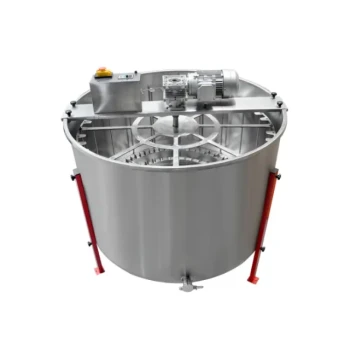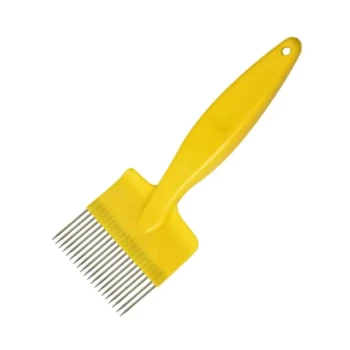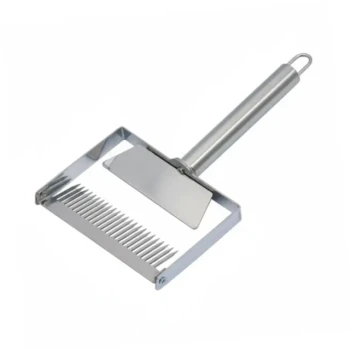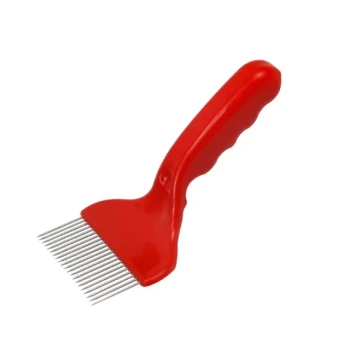The machine used to remove honey from frames is called a honey extractor. This device operates on the principle of centrifugal force, spinning the uncapped frames at high speed to sling the honey out of the honeycomb cells. While the extractor is the central piece of machinery, it is just one component in a broader honey harvesting process that begins with preparing the frames.
A honey extractor is the primary machine for harvesting honey, but it is not the only method. The best approach for you will depend on the scale of your operation, your budget, and whether you want to preserve the honeycomb for the bees to reuse.
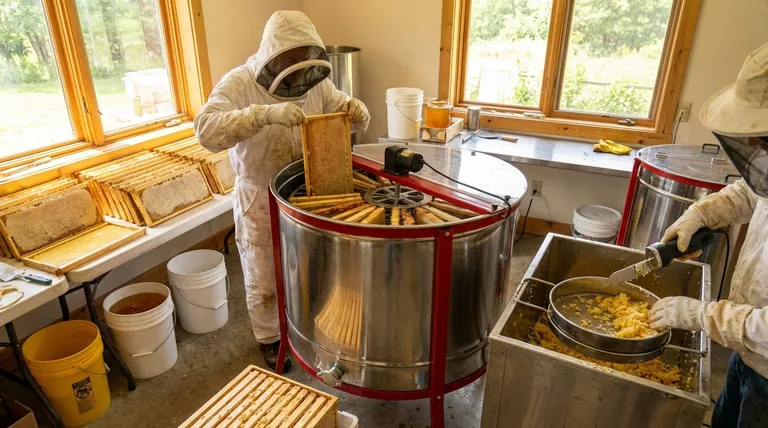
The Honey Extraction Workflow: More Than a Single Machine
Successfully harvesting honey involves a series of steps. The extractor performs the main event, but the preparation before and the processing after are equally critical.
Step 1: Confirming the Honey is Ready
Before any tools are used, you must inspect the honey frames. Look for frames that are "fully capped," meaning the bees have sealed the honeycomb cells with a layer of fresh beeswax.
This capping is a crucial signal. It indicates the bees have fanned the nectar to the correct moisture content (typically below 18.6%), making the honey "ripe" and stable for long-term storage without fermenting.
Step 2: Uncapping the Comb
Once you have a ripe frame, you cannot place it directly into the extractor. You must first remove the wax cappings to expose the honey underneath.
Several tools exist for this task, each with its own advantages. Common options include an electric uncapping knife, a cold knife, an uncapping fork, or a capping scratcher. The goal is to slice off only the top layer of wax without damaging the underlying comb structure.
Step 3: Extraction via Centrifugal Force
With the frames uncapped, they are placed into the slots of the honey extractor. As the machine spins, the outward force pulls the liquid honey from the cells, where it runs down the extractor walls and collects at the bottom.
Extractors can be manual (hand-cranked) or motorized. They are typically made of stainless steel for easy cleaning and food safety. After extraction, the honey is usually filtered through screens or cloth to remove any remaining bits of wax or pollen.
Understanding the Trade-offs: Extractor vs. Other Methods
While an extractor is the standard for modern beekeeping, it is not the only way to get honey from a comb. Understanding the alternatives is key to making an informed decision.
The Honey Extractor Method
This is the most efficient method, especially for larger quantities. Its primary advantage is that it preserves the delicate honeycomb. The empty frames can be returned to the hive, saving the bees the immense energy required to build new wax comb from scratch. The main drawbacks are the initial cost and the space required to store the equipment.
The Crush and Strain Method
This is a low-tech, low-cost alternative. As the name implies, the beekeeper cuts the comb out of the frame, crushes it, and allows the honey to drain through filters or cheesecloth.
This method requires no special machinery, making it ideal for beginners or those with only one or two hives. However, it completely destroys the comb, forcing the bees to rebuild it, which can reduce the next honey harvest.
The Cut Comb Method
This technique bypasses liquid extraction altogether. The beekeeper simply cuts clean, fully capped sections of comb directly from the frame and packages them for sale or consumption.
This produces a premium product known as comb honey. It requires no extractor, but it also sacrifices the comb and typically yields less total honey compared to extraction.
Selecting the Right Method for Your Apiary
Your choice of harvesting method depends entirely on your scale, budget, and desired end product.
- If your primary focus is efficiency and preserving comb: A honey extractor is the best investment, allowing for large, quick harvests while giving bees a head start on the next season.
- If your primary focus is a small-scale or hobbyist setup: The crush and strain method is a low-cost entry point, though it requires more manual labor and forces bees to rebuild comb.
- If your primary focus is creating a premium, natural product: The cut comb method bypasses extraction entirely and offers a distinct, high-value item for sale or as a gift.
Understanding these distinct methods empowers you to harvest honey in a way that best aligns with the health of your colony and your personal goals.
Summary Table:
| Method | Best For | Key Advantage | Key Disadvantage |
|---|---|---|---|
| Honey Extractor | Commercial apiaries, frequent harvests | Preserves honeycomb for bees to reuse | Higher initial cost and storage needs |
| Crush and Strain | Hobbyists, small-scale beekeeping | Low cost, no special equipment required | Destroys honeycomb, more labor-intensive |
| Cut Comb | Premium product sales | Creates a high-value, natural product | Yields less honey, sacrifices the comb |
Ready to Maximize Your Honey Harvests?
For commercial apiaries and beekeeping equipment distributors, choosing the right extraction method is critical for efficiency and colony health. HONESTBEE supplies durable, commercial-grade honey extractors and the full suite of harvesting equipment—from uncapping knives to filtering systems—through our wholesale-focused operations.
Let us help you equip your operation for maximum yield and minimal comb loss. Contact our team today to discuss your needs and request a wholesale quote.
Visual Guide
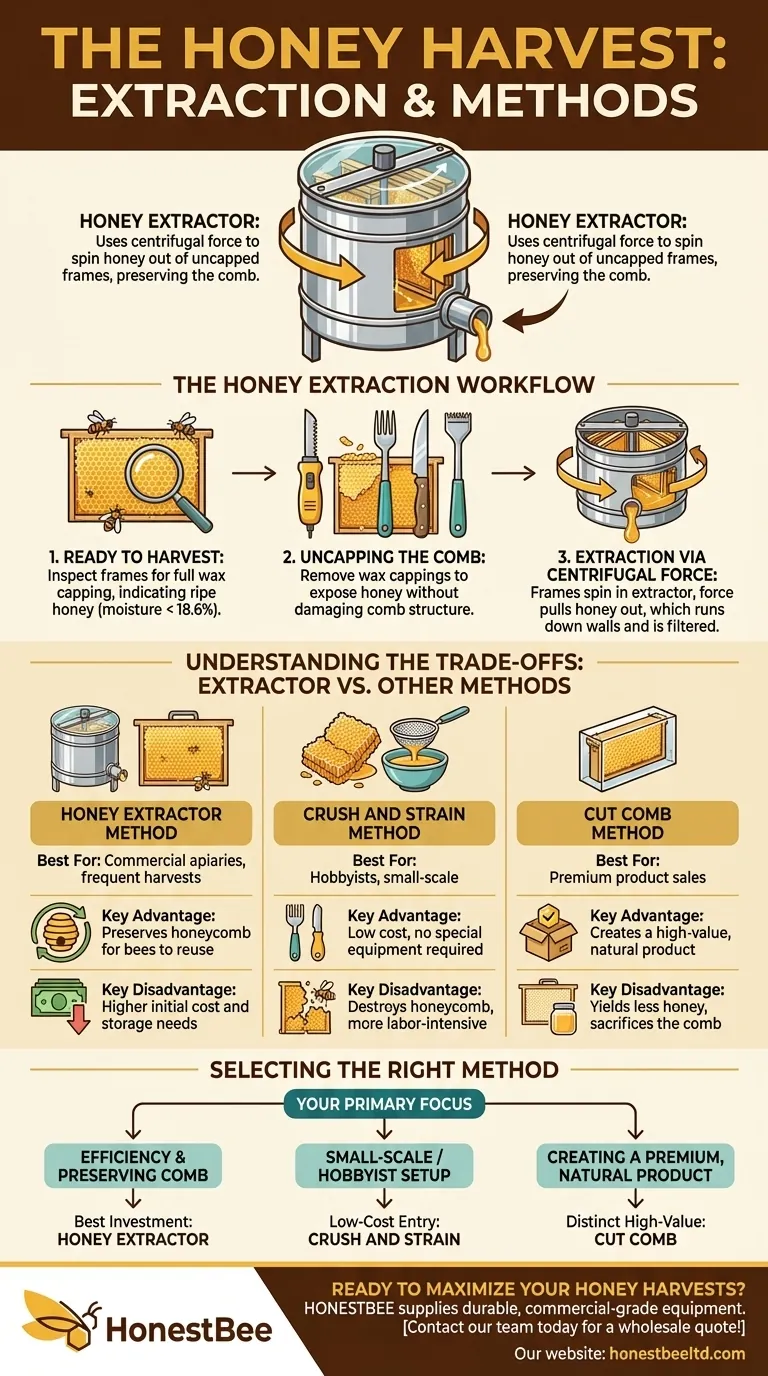
Related Products
- HONESTBEE 72 Frame Industrial Electric Honey Extractor for Beekeeping
- 6 Frame Manual Stainless Steel Honey Extractor Beekeeping Equipment
- 24 Frame Honey Extractor Commercial Radial Honey Frame Extraction Machine
- electric honey extractor honey centrifuge 3 frame honey extractor stainless steel honey frame extractor
- 40 Frame Commercial Electric Honey Extractor for Beekeeping
People Also Ask
- How is honey harvested from Langstroth hives? A Guide to Efficient, Comb-Preserving Extraction
- What are the two common types of honey extractors? Choose the Right Extractor for Your Apiary
- Can a manual extractor be upgraded to an electric one? Save Labor & Boost Efficiency
- How do automatic honey extractors function? Achieve High-Efficiency Honey Harvesting
- What are the advantages of automatic honey extractors? Scale Your Apiary with Unmatched Efficiency




